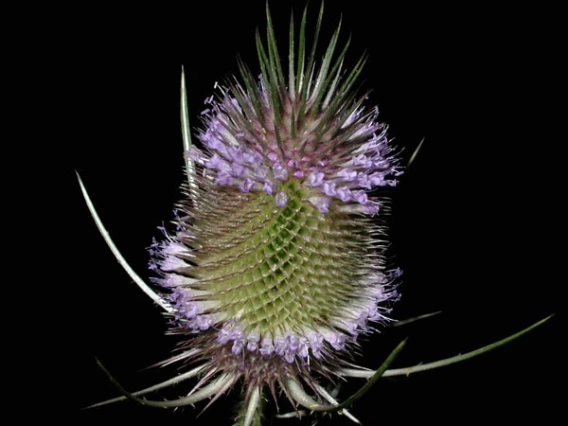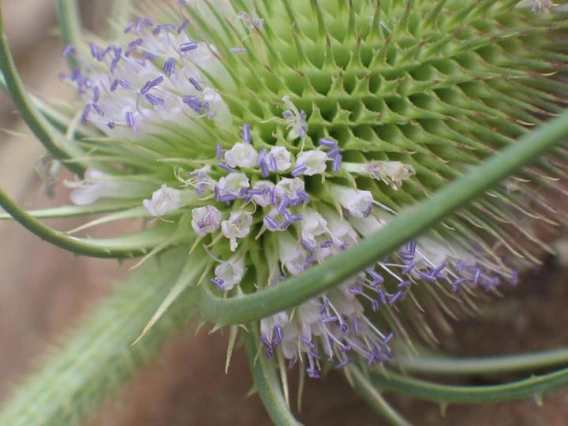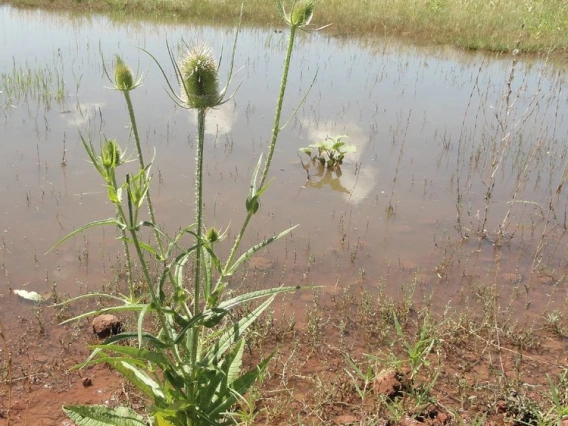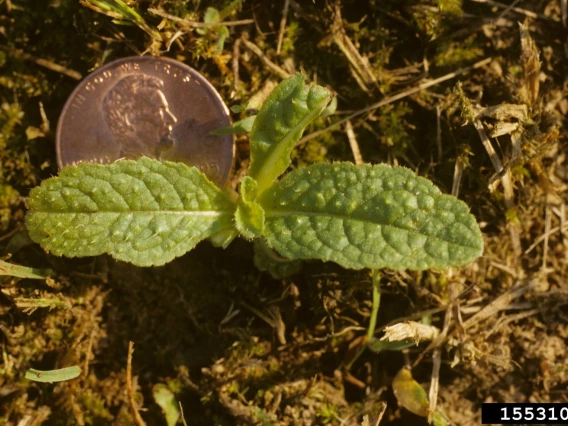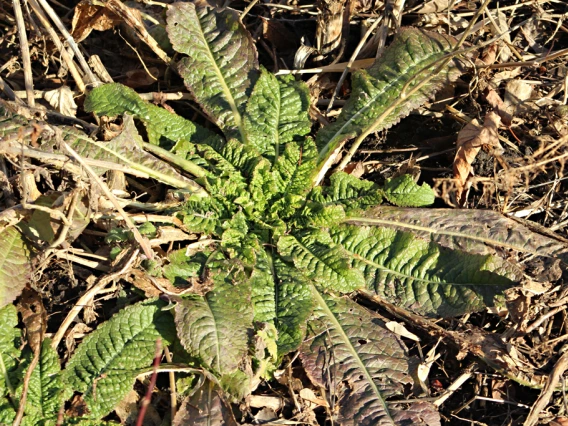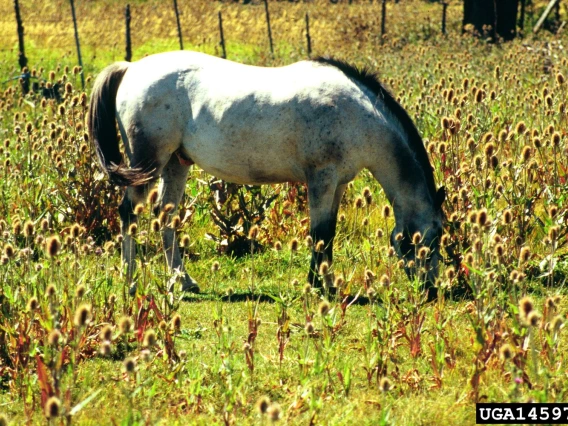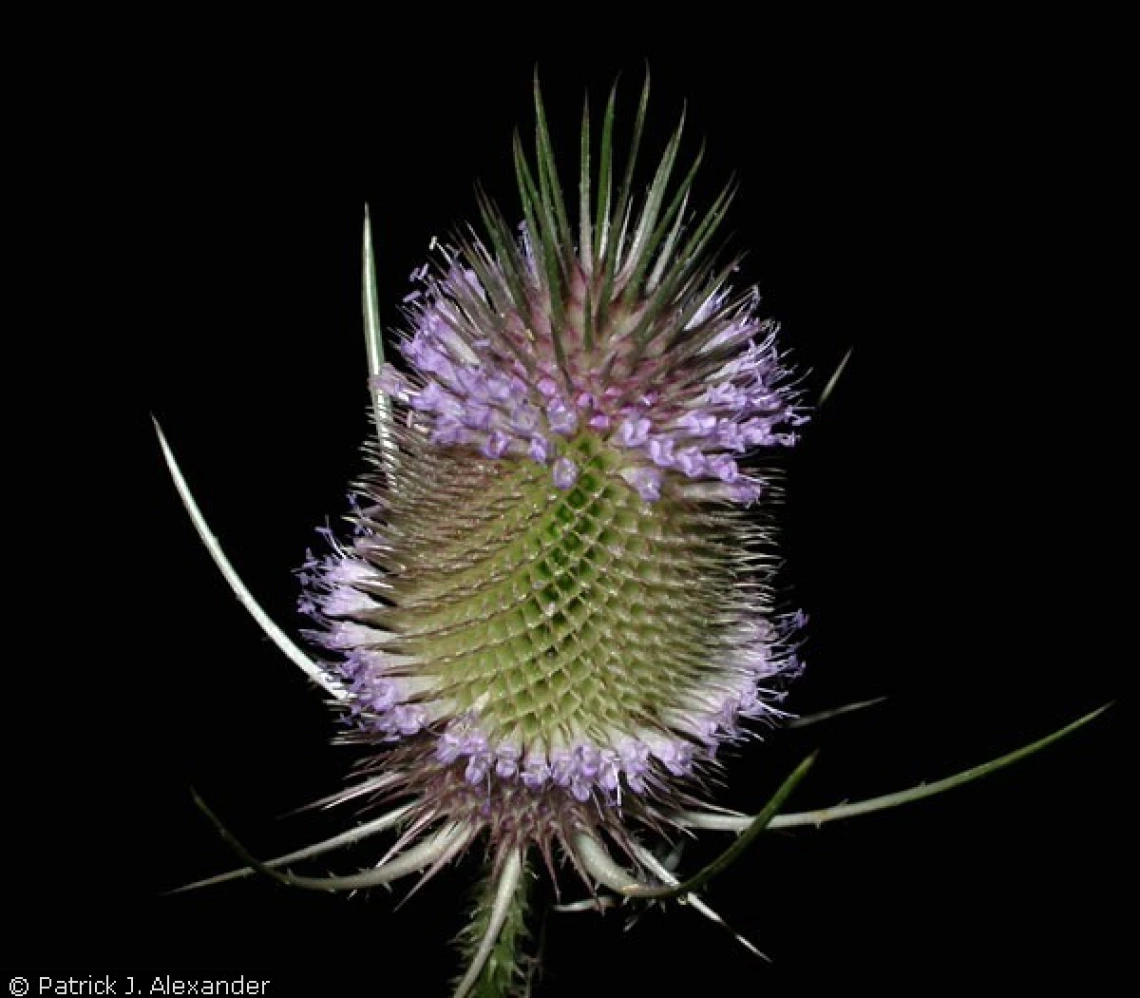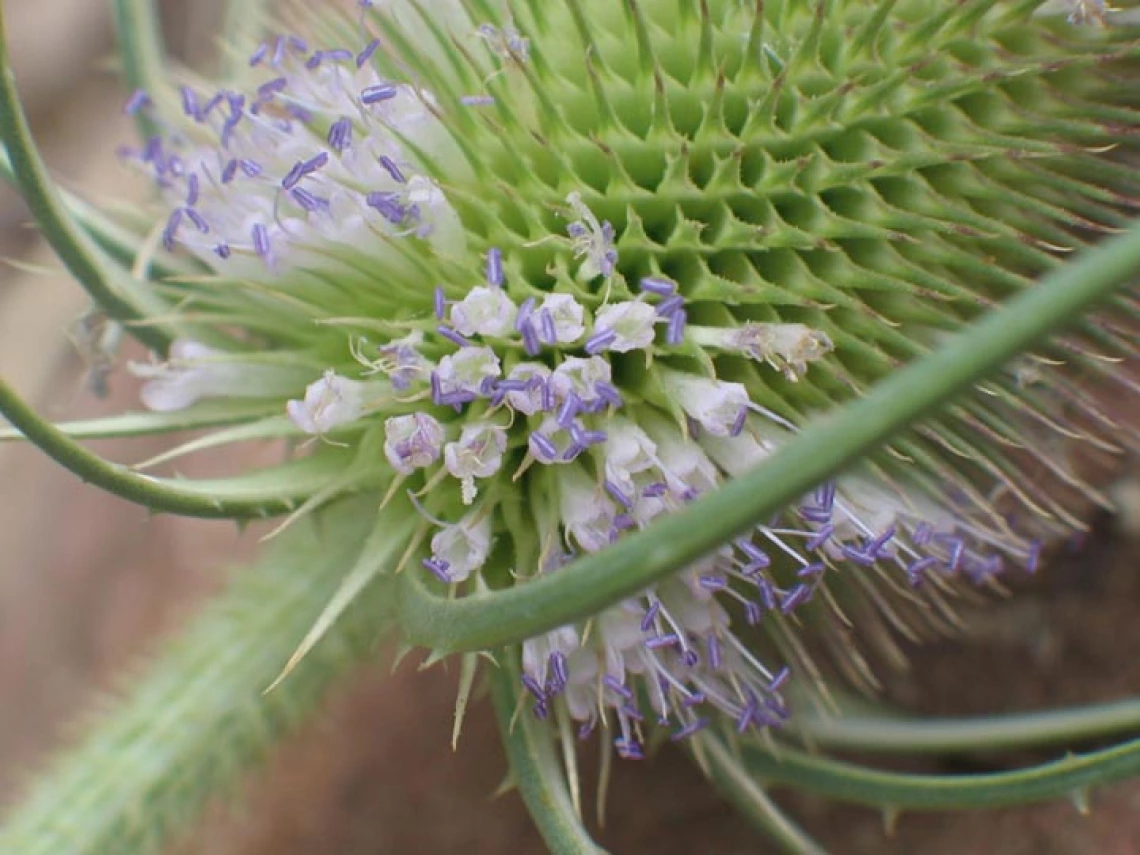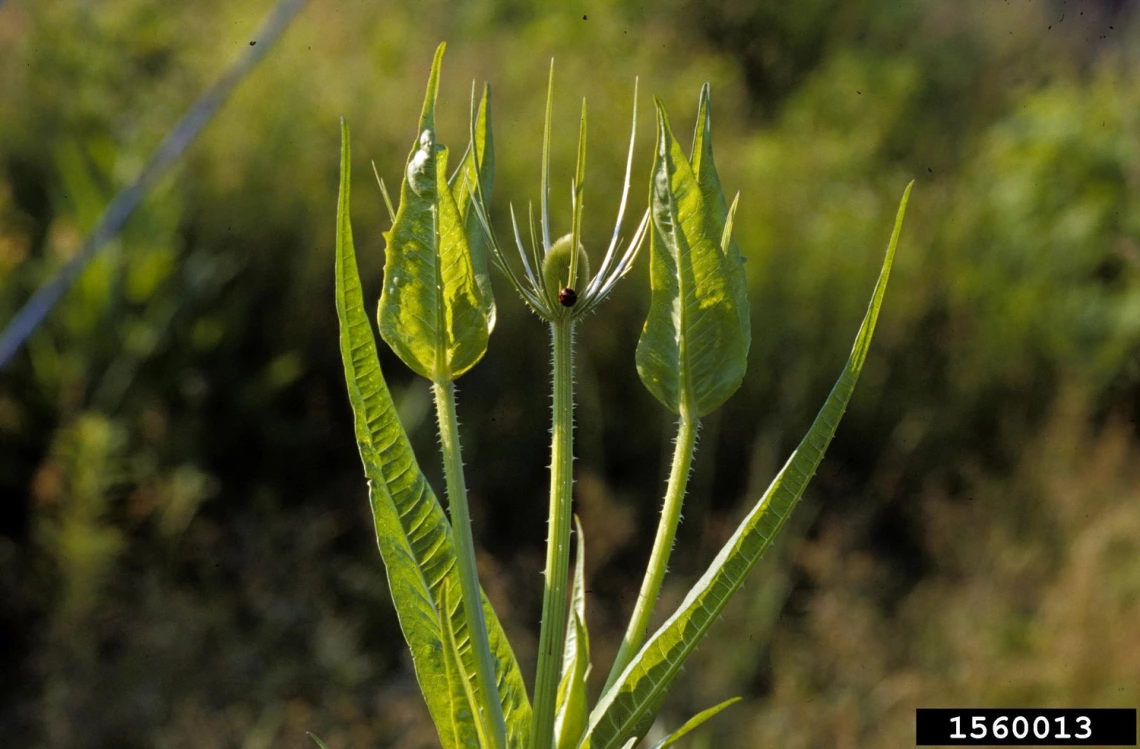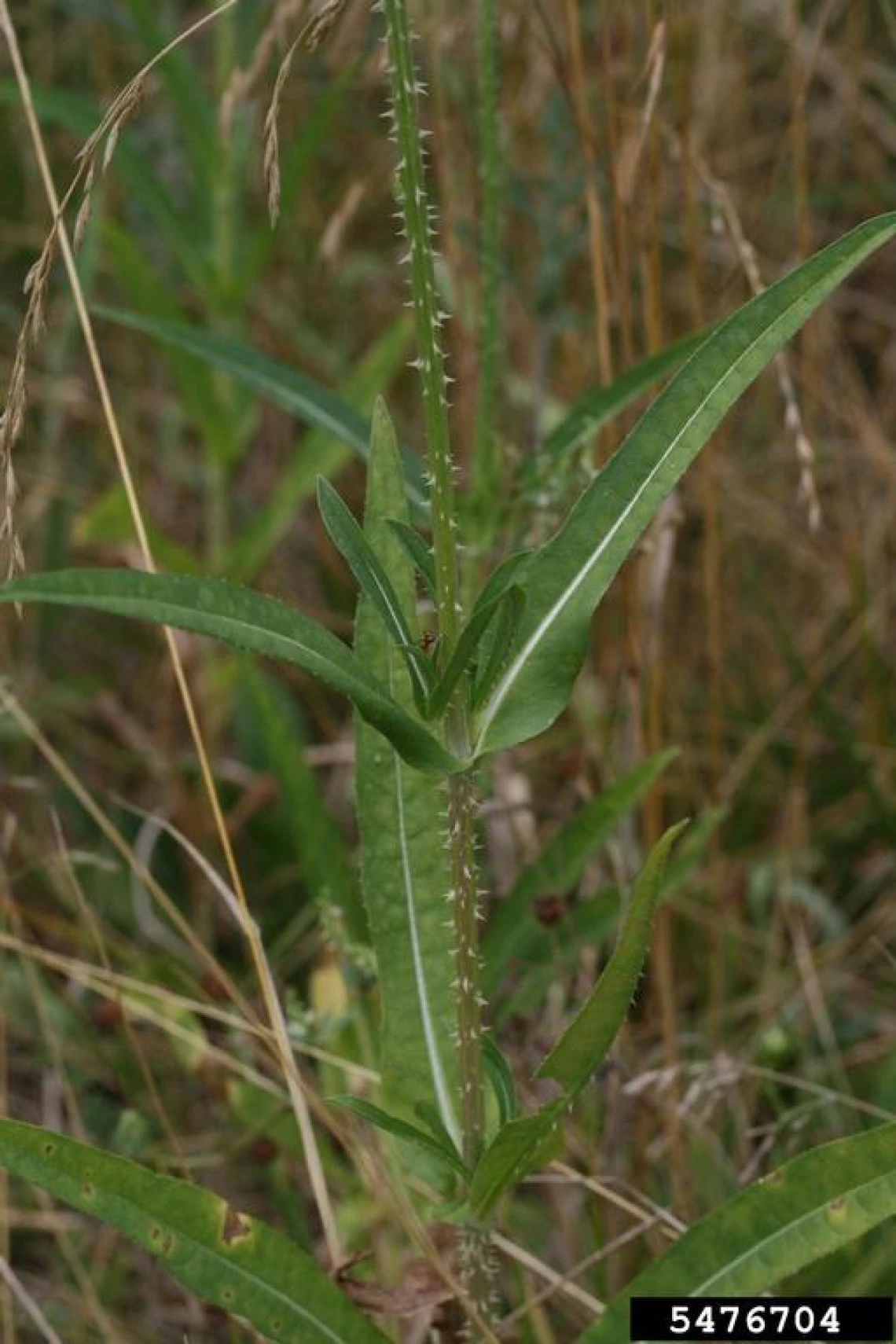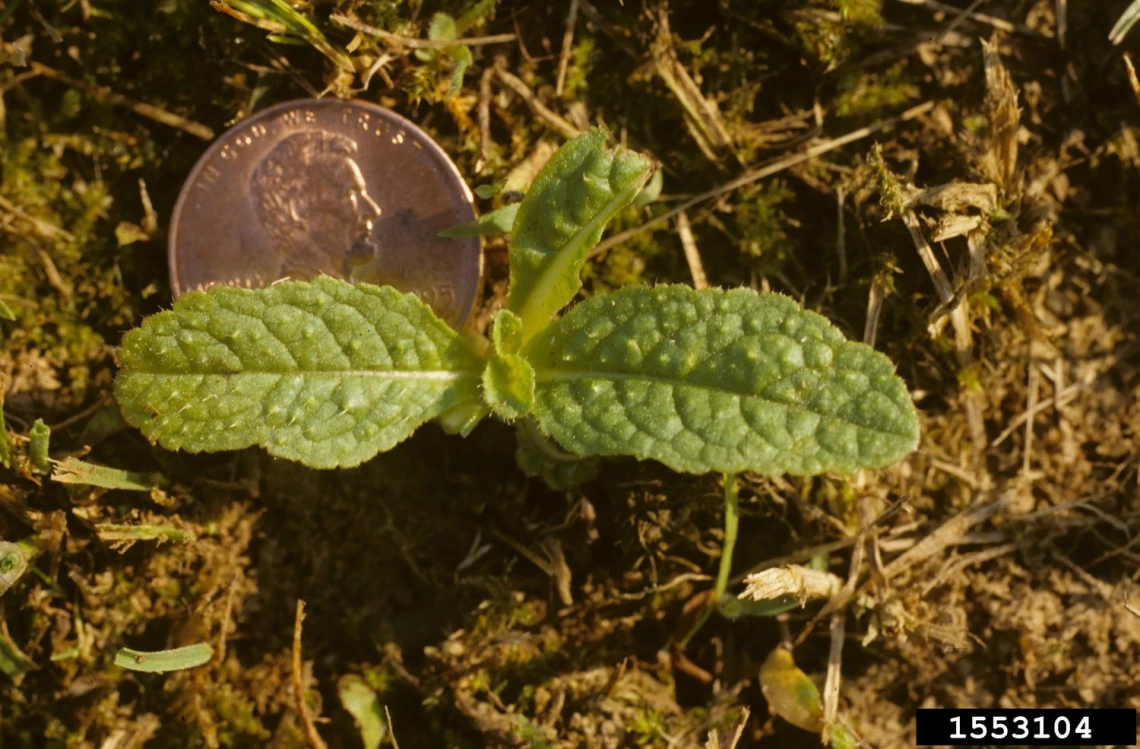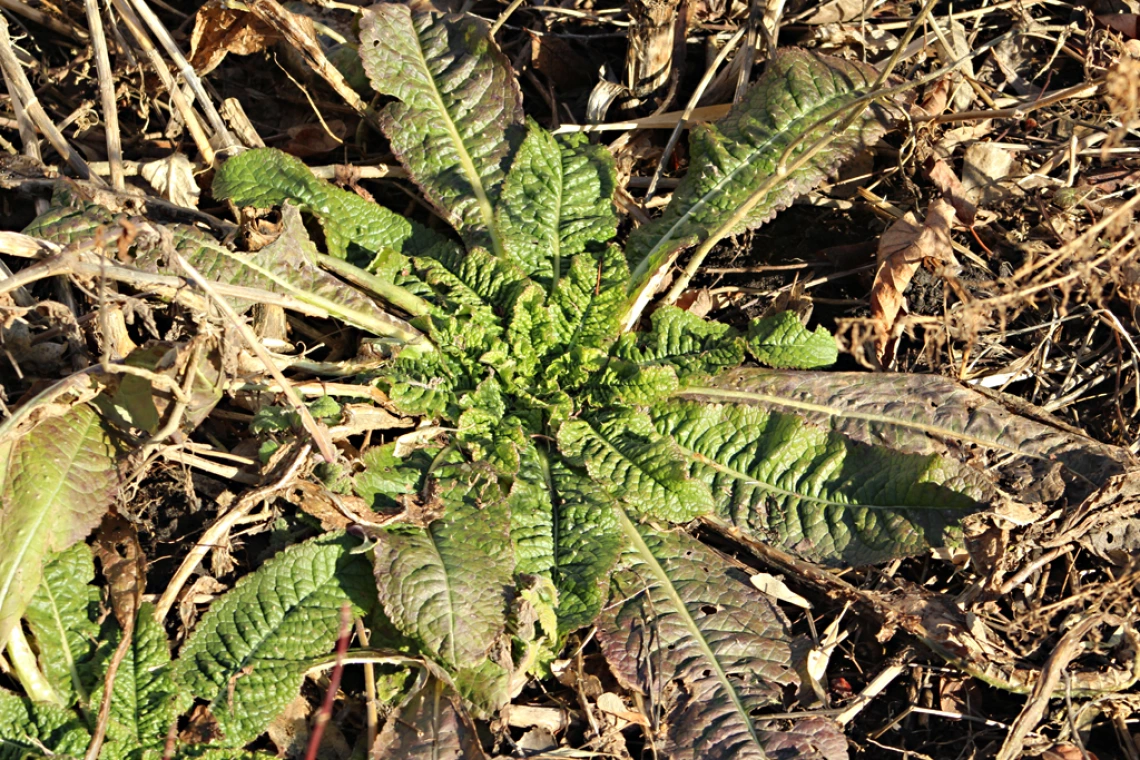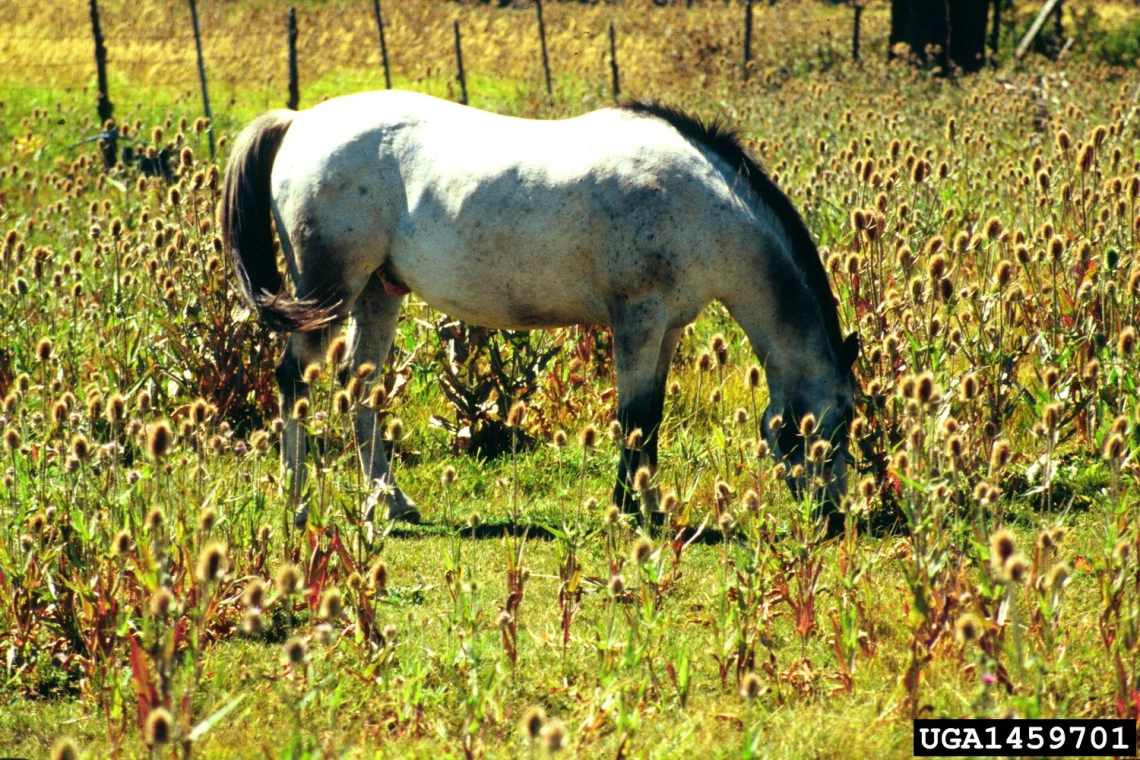Image
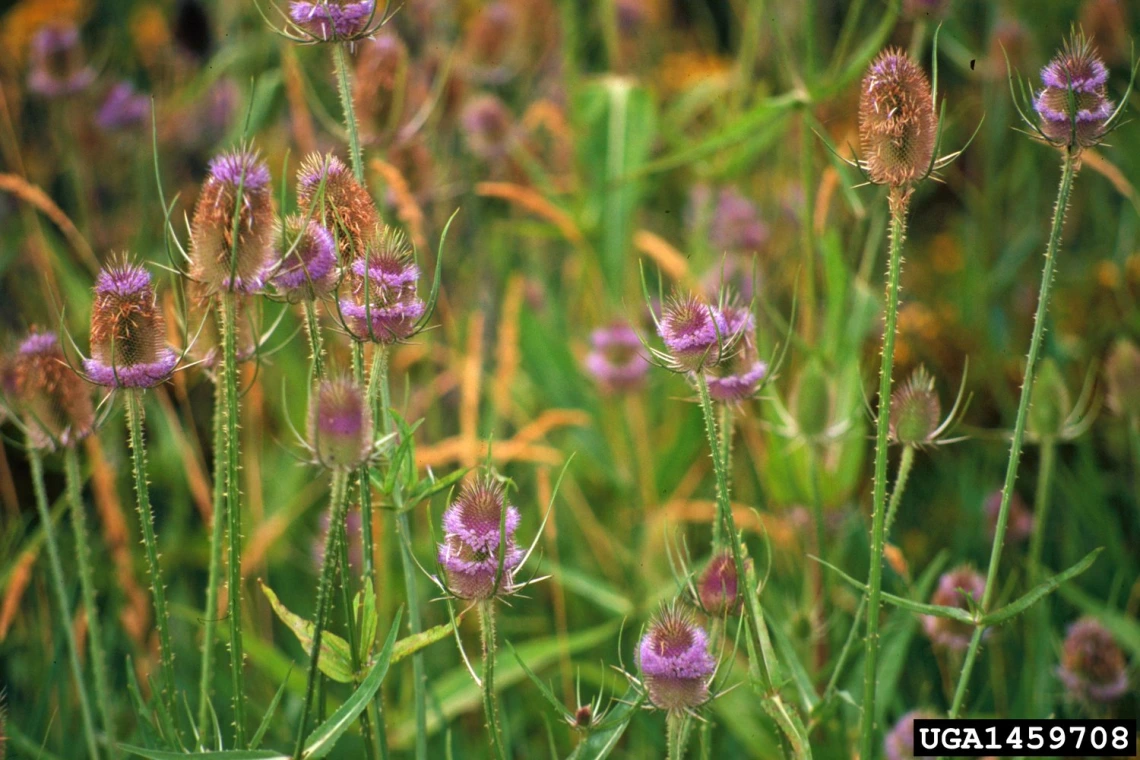
Teasel flowering stalks
Steve Dewey, Utah State University, Bugwood.org
Common Name(s)
Teasel
Common teasel
Scientific Name
Dipsacus fullonum
Family
Teasel family (Dipsacaceae)
Reasons for concern
This plant quickly creates large, dense stands, which overwhelm native grasses and other native species, decreasing native plant diversity so important to wildlife and pollinators. Plants produce many seeds that remain viable for years.
Classification
Non-native
Botanical description
Tall, erect stems with very distinctive flowers at the tips.
Leaves
Rosette, with oval, wrinkled leaves, grows in Year 1. In the second year, stem leaves are lanceshaped, with rounded or scalloped teeth on the leaf margins. Up to 10 inches long, the leaves are attached directly to the stem, opposite each other. Where leaves clasp the stem, a small cup is formed, which occasionally fills with water. All leaves have short, stiff prickles on lower mid-vein of leaf.
Stem(s)
Coarse, prickly stems develop in the summer of Year 2. They grow up to 6 or 7 feet high, and are highly branched near the top. Small spines on the stem point downward. Dead gray-brown stems can persist for a year or more.
Flowers
Very distinctive purple to white flowers are small and densely packed on large egg-shaped flower heads that range from 1 to 4 inches long. Small flowers bloom in circular pattern around large heads from April to September. Narrow, spiny bracts or modified leaves surround flowers, and extend up higher than the flower.
Seeds
Mature September through November. Most fall near parent plant.
Roots
Strong, yellowish taproot may be more than 2 feet long.
Native to
Europe. Teasels are recent arrivals in Coconino County.
Where it grows
Open sunny areas. Moist sites. Disturbed areas, such as fields, roadsides, waste grounds, and ditches at elevations of 6,900 to 8,400 feet. Life cycle: Biennial, occasionally short-lived perennial Teasel flowering stalks.
Reproduction
By seed
Weedy Characteristics
A single plant can produce more than 2,000 seeds. Remaining seeds stay viable for at least six years. Stands can become dense and impenetrable. Seeds can be spread by water, mud, soil movement, human activities, and animals. Dried blossoms are often used in flower arrangements, especially at Christmas, further spreading seeds.
Control Strategies
Dig out the rosettes in year one. Prevent seed production and dispersal. Be sure to bag any flowers or seed for disposal. Remove as much of the taproot as possible, keeping soil disturbance to a minimum. Be diligent every year until seed bank is depleted. Frequently monitor previous infestations for new growth. Plant desirable native species to outcompete invasives.
References
- Common teasel Noxious Weed Control Board, Washington State
- Field Guide for Managing Teasel in the Southwest USDA Forest Service Southwest Region

